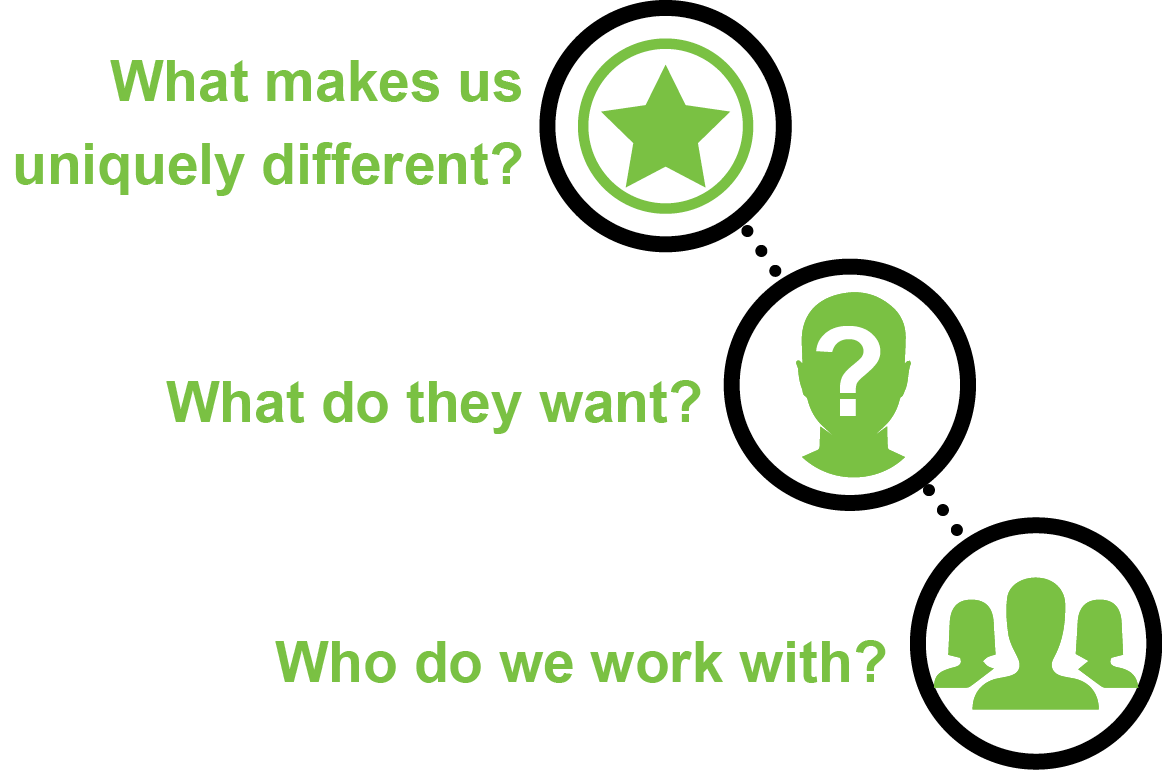
When it comes to choosing a product or service, customers have more options at their disposal than ever before. For your brand to stand out, you need to clearly define what your organisation offers that’s different to your competitors. To do this effectively, you will need to write a value proposition. It’s the primary reason a prospect should buy from you.
Basically the value proposition is a clear statement that tells your audience:
- how your product/service solves customers’ problems or improves their situation
- what specific benefits customers can expect
- why they should buy from you and not from the competition
What makes you valuable?
People won’t buy from you if they don’t understand what you are offering and how it relates to them.
 What the Value Proposition consists of
What the Value Proposition consists of
There is no ‘right’ way to formulate your value proposition but here are some suggestions:
- Headline. What is the end-benefit you’re offering in one short sentence. Can mention the product and/or the customer. This is the attention grabber.
- Sub-headline or a 2-3 sentence paragraph. A specific explanation of what you do/offer, for whom and why is it useful.
- 3 bullet points. List the key benefits or features.
- Visual. Our brains process images 60,000 times faster than text. Show the product, the hero shot or an image reinforcing your main message.
A truly great value proposition paints a picture of your brand for prospects
Evaluate
Evaluate your value proposition by checking whether it answers these questions:
- What product or service is your company selling?
- What is the end-benefit of using it?
- Who is your target customer for this product or service?
- What makes your offering unique and different?
Examples of Value Propositions

Send Better Email
Just three words. That’s all that MailChimp needs to tell you what its brand is all about. It’s simple, direct, and clear. Use its service and you will send better email - end of story.
Shorten. Share. Measure
Known for its link shortening, Bitly is all about removing clutter and being concise, so it’s natural that the company’s value proposition reflect these traits as well.
The Uber homepage excellently conveys the simplicity and ease that lies at the heart of what makes it such a tempting service:
- One tap and a car comes directly to you
- Your driver knows exactly where to go
- Payment is completely cashless
What the value proposition is NOT
It’s not a slogan or a catch phrase. This is not a value proposition:
L’Oréal. Because we’re worth it.
To assist in the development of your value proposition answer these questions
- Who is your customer?
Demographics as well as details such as who influences the purchase, what are their values and what is the timeline for their purchase. - What problem do you solve?
From your customer’s perspective, what challenge are you solving for them? - What are your distinctive benefits?
List three to five benefits your customer gets from choosing your product/service that customers don’t get from going elsewhere. - What’s your brand promise?
This is like a pledge. What will you always do for your customers? It could be something like a money‑back happiness guarantee on every order. - How does it fit together?
Create a single paragraph from your answers so far, with the aim to end up with a unique message. - Can you make it shorter?
Now, refine. Take your time, review again and again until you’ve distilled your value proposition to one clear line that captures what you want to say.



